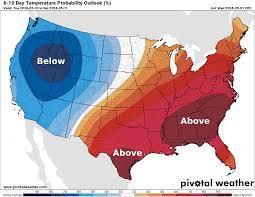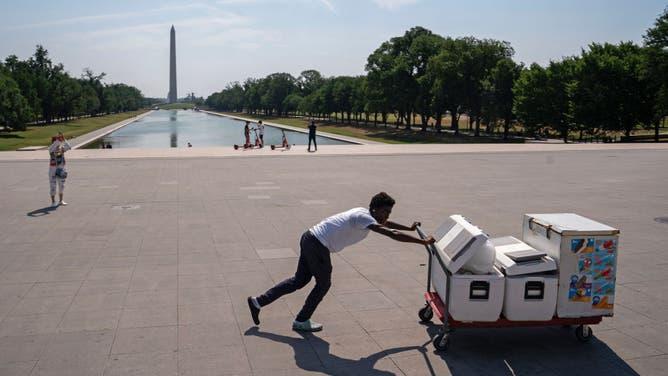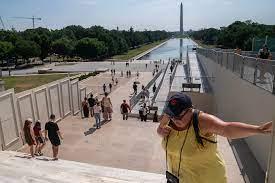Washington, D.C. experienced its hottest three-day stretch since the 1930s. Temperatures reached or exceeded 101°F for three consecutive days.
This heat wave broke records set in 1954 and 1988. The Dust Bowl era of the 1930s last saw similar prolonged extreme temperatures.
Northeast U.S. Grapples with Extreme Heat

The U.S. Northeast region faced severe heat conditions. The NWS HeatRisk tool assessed high heat-related impacts.
Temperatures peaked on Tuesday across the region. Historically, the Northeast experiences an average of 12 heat waves per year.
Capital Under Exceptional Heat Warning

Washington, D.C. was placed under an exceptional heat warning. The city battled dangerously high temperatures all week.
Heat warnings are issued when heat index values exceed 105°F for over 3 hours. D.C. averages 36 days per year with temperatures above 90°F.
Record-Breaking Temperatures Shock Meteorologists

Meteorologist Matthew Cappucci reported the record-breaking temperatures on social media. Sunday’s temperature of 101°F broke a 1954 record.
Monday reached 102°F, surpassing a 1988 record. Tuesday hit 104°F, tying the hottest day since July 7, 2012.
Four-Day Streak of Triple-Digit Temperatures

Reagan National Airport recorded 100°F on Wednesday. This marked the fourth consecutive day of triple-digit temperatures.
The streak tied the longest on record for the area. D.C.’s average July high temperature is 89°F.
Warm, Humid Air Drives Prolonged Heat

NWS meteorologist Luis Rosa attributed the heat to warm, humid air. Long-duration heat is uncommon for the Washington, D.C. area.
The region typically experiences 3-4 heat waves per summer. Climate change has increased the frequency of heat waves by 45% since the 1960s.
Heat Index Values Reach Dangerous Levels

Heat index values in D.C. reached as high as 109°F. The heat index combines air temperature and relative humidity.
Values above 103°F are considered dangerous. Excessive heat causes more weather-related deaths in the U.S. than any other hazard.
Severe Storms and Flooding Risk Emerges

Forecasts predicted showers and thunderstorms for Wednesday evening. Some storms had the potential to become severe.
The NWS warned of possible flooding risks. Annually, severe storms cause about $15 billion in damages in the U.S.
Historical Context: Dust Bowl Comparison

The heat wave drew comparisons to the U.S. Dust Bowl era. The Dust Bowl, lasting from 1930 to 1936, saw extreme heat and drought.
It affected 100 million acres across several states. The current heat wave reflects increasing frequency of extreme weather events.
Climate Change Amplifies Heat Wave Intensity

Climate scientists link increased heat wave frequency to climate change. Global temperatures have risen by 1.1°C since pre-industrial times.
Heat waves are becoming more frequent and intense worldwide. The IPCC projects more frequent and severe heat waves in coming decades.


